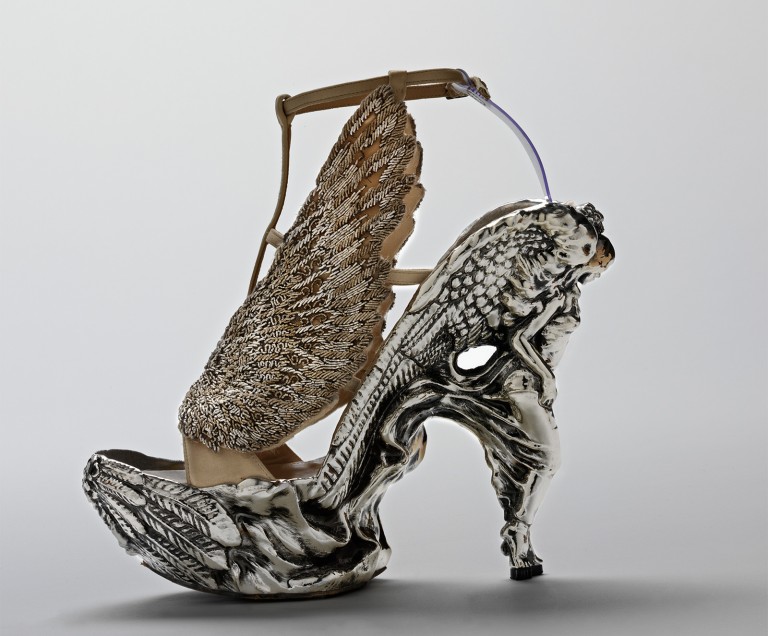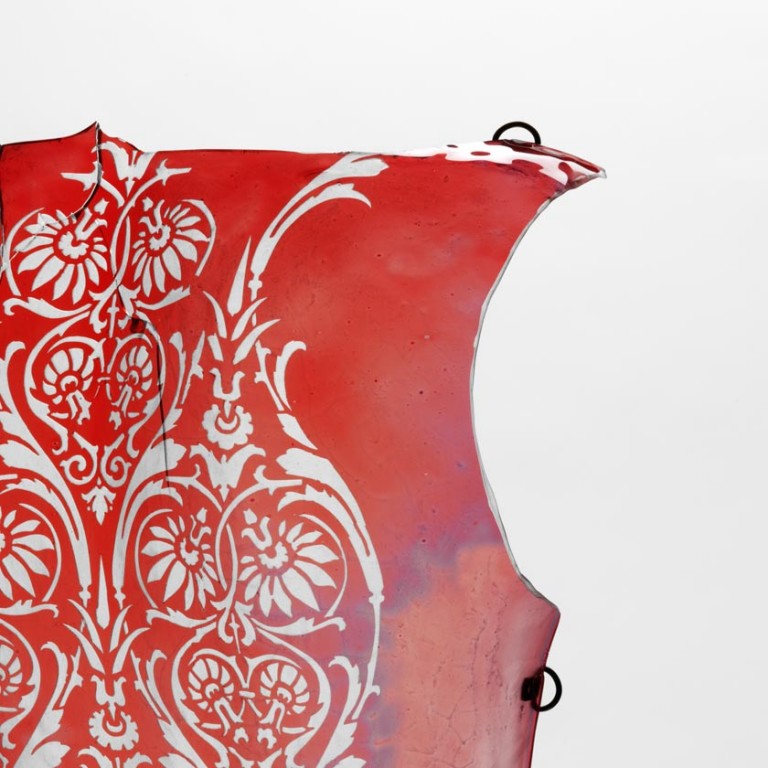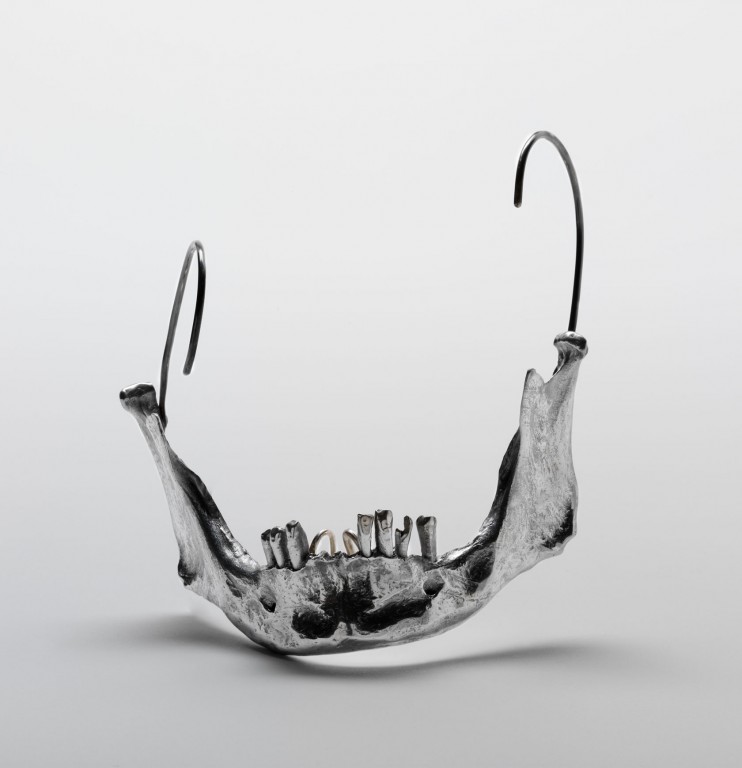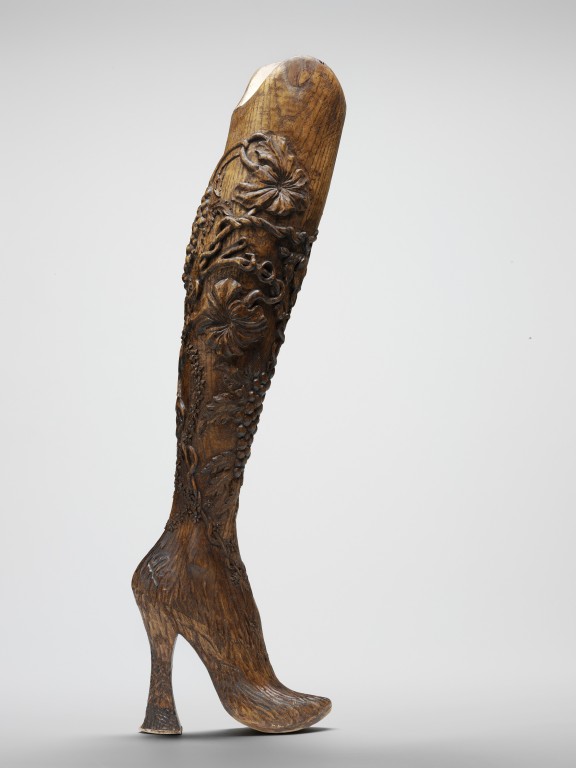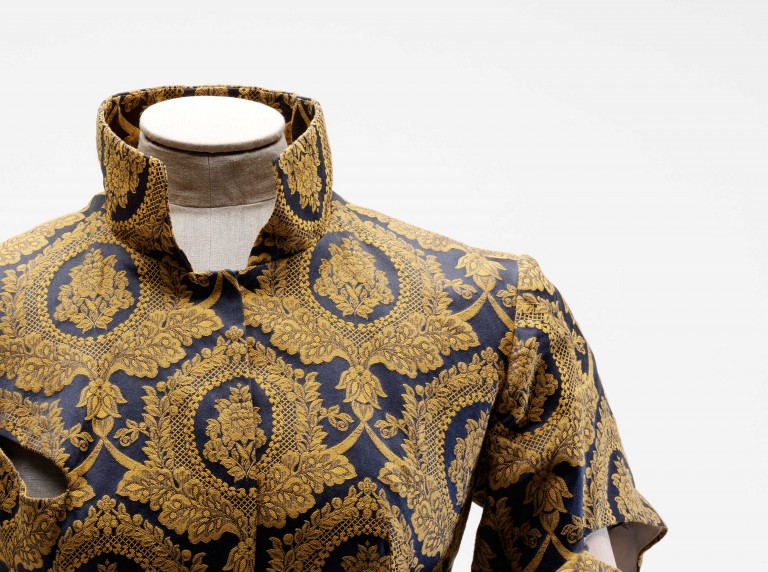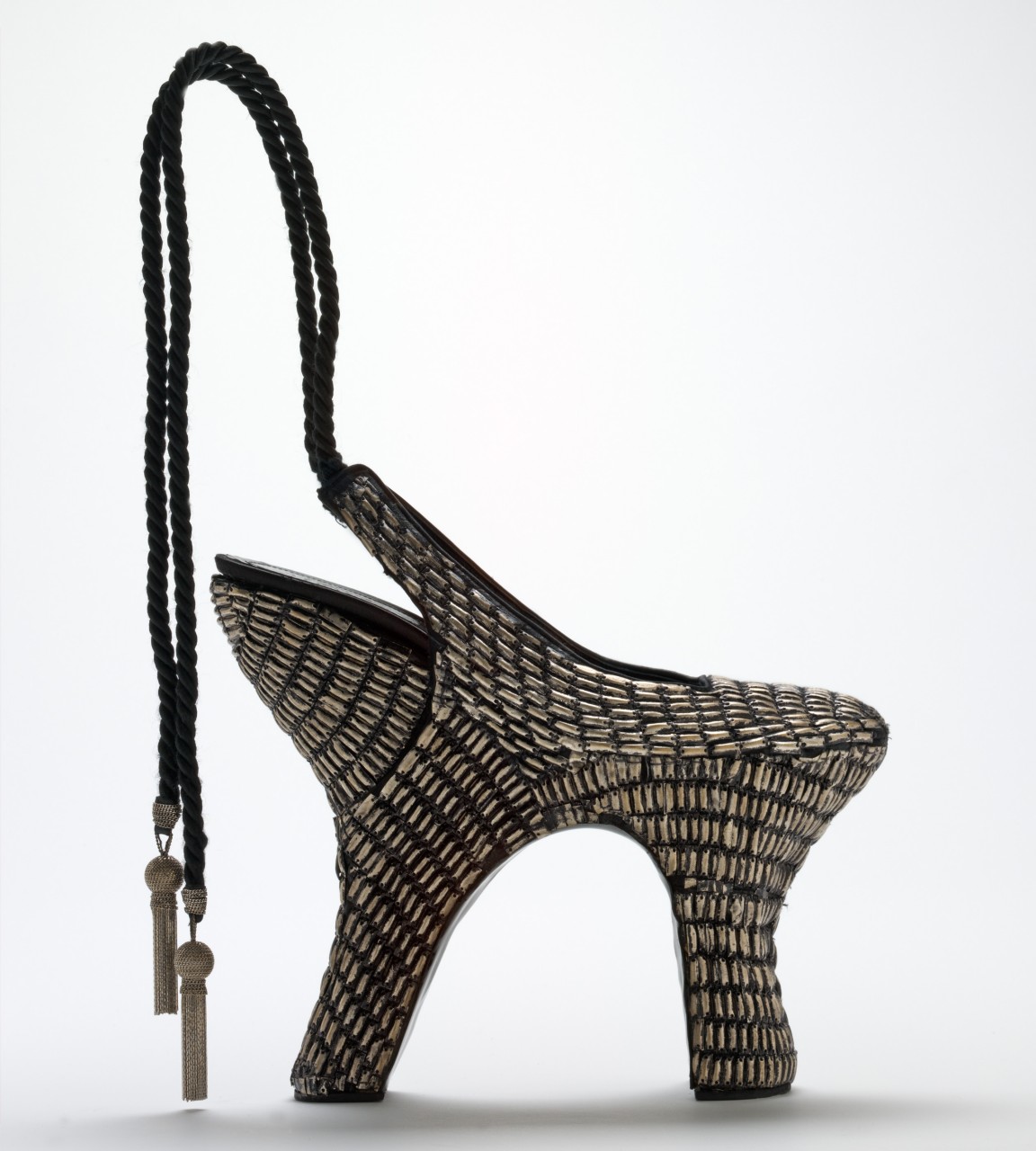CHOPINES AND GETA
Fashionable from the late fifteenth to the early seventeenth century, especially in Venice, [the chopine] was both practical and symbolic. It protected the feet from wet streets and also signified the status of the wearer. Transformed into towering figures, Venetian noblewomen were sometimes completely destabilized by their precarious footwear. The chopine denoted wealth and privilege, but also had sexual allure.
Eastern traditions were clearly an inspiration for many of Alexander McQueen’s footwear designs. The tall double-heeled backless shoes featured in La Dame Bleue (Spring/Summer 2008) derived from the geta, a form of traditional Japanese footwear. Worn by both women and men with clothing such as the kimono, one form of the geta consists of a wooden base, elevated by two wooden blocks or ‘teeth’ and held onto the foot with a fabric thong. The more spectacular examples were richly decorated and could reach a height of 30 cm. As with the chopine, and the equally vertiginous footwear of elite Manchu women in China’s Qing dynasty (1644–1911), wearing the high geta altered the deportment and gait, slowing down movement – and allowing the viewer to take a closer look at the wearer’s beauty and luxurious clothing.

